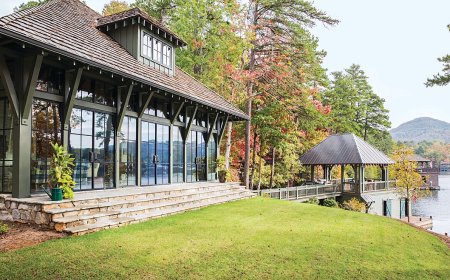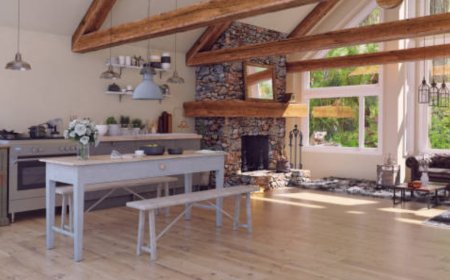How to Picnic in Hasparren Cider Houses
How to Picnic in Hasparren Cider Houses Deep in the verdant hills of the French Basque Country, nestled between rolling vineyards and ancient stone farmhouses, lies the quiet village of Hasparren—a place where time moves to the rhythm of the cider press and the laughter of neighbors gathered under wooden eaves. Here, the tradition of cidre basque is not merely a beverage; it is a cultural cornerst
How to Picnic in Hasparren Cider Houses
Deep in the verdant hills of the French Basque Country, nestled between rolling vineyards and ancient stone farmhouses, lies the quiet village of Hasparren—a place where time moves to the rhythm of the cider press and the laughter of neighbors gathered under wooden eaves. Here, the tradition of cidre basque is not merely a beverage; it is a cultural cornerstone, a ritual of community, and a sensory experience unlike any other. Picnicking in Hasparren’s cider houses—known locally as cidreries—is not simply an outdoor meal. It is an immersion into centuries-old Basque customs, a celebration of terroir, and a quiet rebellion against the haste of modern life.
Unlike conventional picnics in city parks or seaside lawns, a picnic in a Hasparren cider house demands intention, respect, and a willingness to engage with local rhythm. It is an opportunity to taste apples harvested from trees older than your grandparents, to sip cider poured straight from the barrel, and to share bread and cheese with strangers who become friends by sunset. This guide will walk you through every step of planning, executing, and honoring this unique tradition—whether you’re a first-time visitor or a seasoned traveler seeking deeper cultural connection.
The importance of learning how to picnic in Hasparren cider houses extends beyond tourism. It supports small-scale producers who preserve heirloom apple varieties, sustains rural economies, and keeps alive oral traditions passed down through generations. In an age of mass-produced drinks and homogenized experiences, this practice is an act of cultural preservation. By following the customs outlined here, you become not just a guest—but a steward of heritage.
Step-by-Step Guide
Step 1: Understand the Season and Timing
Hasparren’s cider houses operate on a strict seasonal calendar. The primary cider-making season runs from late October through early February, when apples are harvested and pressed. However, the period for public visits and picnics typically begins in January and extends through May, with peak activity in March and April. During this time, the newly fermented cider is ready for tasting, and the cider houses open their doors to visitors seeking the full experience.
Avoid visiting in summer months (June–August), when most cider houses close for maintenance, or in late fall, when the orchards are being prepared for harvest. The ideal window is mid-January to mid-May, when the air is crisp, the cider is lively, and the atmosphere is most welcoming. Weekdays are quieter and more authentic; weekends draw larger crowds, especially from nearby Bayonne and Biarritz.
Step 2: Choose Your Cider House
Hasparren is home to approximately 15 active cider houses, each with its own character, production style, and ambiance. Some are family-run operations with centuries-old presses; others are newer ventures blending tradition with innovation. Research a few options before you go:
- Cidrerie Oyhanart – One of the oldest, known for its rustic wooden tasting hall and unfiltered cider.
- Cidrerie Larralde – Offers guided tours and a spacious outdoor terrace perfect for picnics.
- Cidrerie Arretxea – Focuses on organic, biodynamic apples and hosts live Basque music on Sundays.
- Cidrerie Etchegaray – Popular with locals; minimal signage, authentic charm.
Check each cider house’s website or social media for opening hours, reservation policies, and whether they allow outside food. Some require advance booking for picnic seating, especially during peak season.
Step 3: Prepare Your Picnic Basket
The Basque tradition of cider house picnics revolves around simplicity and quality. You are not expected to bring elaborate dishes—only the essentials that complement the cider’s tart, earthy profile.
Essential items to pack:
- Betelu bread – A dense, slightly sour sourdough loaf from the Basque region. Slice it thickly.
- Idiazabal cheese – A smoky, sheep’s milk cheese that pairs perfectly with cider’s acidity.
- Bayonne ham or jambon de Bayonne – Thinly sliced, air-dried cured ham, rich and salty.
- Dried fruits – Figs, apricots, or walnuts add sweetness and texture.
- Local honey or quince paste – A small jar to drizzle over cheese or bread.
- Reusable glassware – Bring two small tumblers or wine glasses. Many cider houses provide them, but bringing your own shows respect for sustainability.
- Wool blanket or waterproof picnic mat – The ground can be damp, even in spring.
- Small cutting board and knife – For slicing cheese and bread on-site.
- Water bottle – Cider is strong; stay hydrated.
- Trash bag – Leave no trace. Everything you bring in, you take out.
Avoid bringing: canned sodas, plastic containers, pre-packaged snacks, or anything overly sweet or spicy. These clash with the cider’s natural profile and disrupt the cultural harmony of the experience.
Step 4: Arrive and Greet
Upon arrival, do not rush to set up your picnic. First, approach the host or owner with a polite greeting in Basque or French: “Kaixo” (hello) or “Bonjour.” Even if your pronunciation is imperfect, the effort is deeply appreciated. Many owners will invite you to observe the pressing process or taste a sample of the current batch.
Ask: “Quelle est la cidre du jour?” (What’s today’s cider?) or “C’est un mélange de quelles pommes?” (What apples are blended?) This shows genuine interest and often leads to a personal recommendation.
Wait for permission before sitting. Some cider houses have designated picnic zones near the press room or under the old chestnut trees. Others may seat you at communal wooden tables. Never assume you can sit anywhere—even if the space looks empty.
Step 5: Pour and Taste the Cider Correctly
One of the most iconic rituals in a Hasparren cider house is the txotx—the traditional method of pouring cider directly from the barrel.
When the host invites you to participate in the txotx, follow these steps:
- Hold your glass at a slight angle, about 30 cm below the spigot.
- When the cider begins to flow, let it cascade in a thin, steady stream—do not fill the glass completely.
- Allow the cider to aerate for 10–15 seconds as it hits the glass. This releases its aroma and softens the acidity.
- Take a small sip. Note the crispness, the apple flavor, the faint tannins.
- Do not refill your glass immediately. Wait for the host to pour again, or until others around you have had a second pour.
Never use a straw. Never chug. Never pour your own cider without invitation. The txotx is a communal act—it binds guests together. Rushing it breaks the ritual.
Step 6: Eat with Intention
Once you’ve tasted the cider, begin your picnic slowly. Place your bread on the wooden table. Slice the cheese gently. Layer ham over bread, then add a sliver of cheese. Drizzle honey sparingly. Eat with your hands—no forks required. This is how the Basques have done it for generations.
Between bites, sip the cider slowly. Let the flavors interact: the salt of the ham, the creaminess of the cheese, the tang of the cider. The cider should cleanse your palate, not overwhelm it.
Engage with others around you. A simple “C’est bon, n’est-ce pas?” (It’s good, isn’t it?) often sparks conversation. Locals may share stories about their orchards, their grandparents’ presses, or the weather’s effect on this year’s harvest.
Step 7: Clean Up and Depart with Gratitude
When your picnic concludes, clean your area meticulously. Place all trash in your bag. Wipe the table with a damp cloth if one is provided. Return any borrowed items—glasses, cutting boards, napkins—to the host.
Before leaving, thank the owner personally. Say “Eskerrik asko” (thank you in Basque). If you feel moved, leave a small tip in the donation jar near the door—even €5 is meaningful. Many cider houses are non-profit cooperatives; your contribution helps them survive.
Do not take photos of the press or barrels without asking. Some families consider these sacred tools. Always ask permission before photographing people.
Best Practices
Respect the Silence Between Sips
Unlike wine tastings, where conversation flows freely, cider house picnics often thrive in quietude. The Basques believe that cider speaks best in stillness. Allow moments of silence between sips. Listen to the creak of the wooden beams, the distant clatter of a bucket, the wind through the trees. This is part of the experience.
Wear Appropriate Clothing
Wear sturdy, comfortable shoes—cobblestone paths and damp grass are common. Avoid high heels or delicate fabrics. Layer your clothing: mornings can be cool, afternoons warm. A light wool sweater or linen jacket is ideal. Avoid strong perfumes or colognes; they interfere with the cider’s natural aromas.
Bring Cash, Not Cards
Many cider houses in Hasparren still operate on a cash-only basis. Even if they accept cards, having €20–€50 in small bills ensures you can pay for cider, cheese, or a donation without hassle. ATMs are scarce in the village center; withdraw cash in Bayonne before arriving.
Arrive Early, Stay Late
Arrive between 10 a.m. and 11 a.m. to avoid crowds and secure a prime picnic spot. Stay until sunset if possible. The golden hour over the orchards is magical, and the cider tastes even better as the day cools. Many locals linger until dusk, sharing stories and songs.
Do Not Rush the Experience
A typical cider house picnic lasts 2–3 hours. Do not plan to visit multiple cider houses in one day. Each one deserves your full attention. Rushing defeats the purpose. This is not a checklist. It is a slow, deliberate ritual.
Learn a Few Basque Phrases
Even basic phrases go a long way:
- Kaixo – Hello
- Eskerrik asko – Thank you
- Onena – Good
- Agur – Goodbye
- Zein da zure cidrearen izena? – What is your cider’s name?
These are not just words—they are gestures of respect. Locals will notice, and they will respond with warmth.
Support the Local Economy
Buy directly from the cider house: take home a bottle of cider, a jar of apple jam, or a small wooden cider spoon. Avoid purchasing cider from supermarkets or tourist shops. The profit from your purchase goes directly to the family who made it.
Be Mindful of Children and Pets
Children are welcome, but they must be supervised. Cider barrels are heavy, and the press room is not a play area. Pets are rarely allowed inside the tasting halls due to hygiene and tradition. If you bring a dog, keep it leashed and outside. Many cider houses have outdoor spaces where pets can wait comfortably.
Photography Etiquette
Photography is encouraged—but respectfully. Avoid flash. Do not photograph people without asking. If you want to capture the txotx ritual, wait for the host to signal permission. Focus on textures: the grain of the wood, the foam on the cider, the light through the windows. These images tell the story better than posed portraits.
Tools and Resources
Recommended Apps and Websites
- Basque Country Tourism Portal – www.basquecountry.eu – Official tourism site with updated cider house listings, maps, and seasonal events.
- Cidres du Pays Basque – www.cidresdupaysbasque.fr – A curated directory of certified cider producers in Hasparren and surrounding villages.
- Google Maps – Use the “Cidrerie” filter to locate nearby cider houses. Many have user photos and reviews that reveal opening hours.
- Apple Maps – Useful for offline navigation; download the Hasparren area before arriving.
- Google Translate (Offline Mode) – Download French and Basque language packs for real-time translation of signs and menus.
Essential Reading
- The Cider Maker’s Handbook by Jean-Luc Larralde – A detailed history of Basque cider production, including heirloom apple varieties.
- Basque Food: Traditions of the Pyrenees by Maria Jose Aizpurua – Recipes and cultural context for cider pairings.
- Orchards of Memory: A Basque Chronicle by Pierre Etchegaray – A poetic memoir of life in Hasparren’s cider houses.
Local Markets to Visit Before Your Picnic
Stop by the Hasparren weekly market (held every Thursday morning at Place de la Mairie) to source your picnic items:
- Fromagerie Le Chèvre d’Or – Fresh Idiazabal cheese, aged up to 12 months.
- Boulangerie Otxoa – Betelu bread baked daily using sourdough starter from 1923.
- Charcuterie Larralde – Jambon de Bayonne, dried sausages, and local pâtés.
- Marché aux Fruits – Seasonal apples, quince, and wild honey.
Buying locally ensures freshness and supports the same community you’ll visit later that day.
Transportation Options
Hasparren is accessible by car, train, or bus:
- By Car – The most convenient option. Parking is free at most cider houses. From Bayonne: 20 minutes via D918.
- By Train – Take the SNCF train from Bayonne to Hasparren station (30 minutes). From the station, it’s a 15-minute walk to the village center. Taxis are available but rare.
- By Bus – Line 501 runs from Bayonne to Hasparren hourly. Check schedules at www.transports64.fr.
Do not rely on ride-sharing apps like Uber—they rarely operate in Hasparren.
What to Pack in Your Car
If driving, keep these items in your trunk:
- Extra water bottles
- Small first-aid kit
- Umbrella or rain poncho
- Portable phone charger
- Map of Hasparren (printed, as cell service can be spotty)
- Reusable shopping bags (for cider bottles)
Real Examples
Example 1: The Martinez Family Visit
In March 2023, the Martinez family from Lyon visited Hasparren for the first time. They arrived at Cidrerie Larralde at 10:30 a.m., having packed Betelu bread, Idiazabal cheese, and a bottle of local honey from their own region. They greeted the owner, Jean-Michel, with “Kaixo,” and he invited them to watch the morning txotx.
They sat under the chestnut tree, eating slowly, sipping cider in silence. A local musician began playing the txistu (Basque flute) nearby. The Martinez children, ages 7 and 10, were given small wooden cups of cider diluted with water—a traditional child-friendly version. By noon, they were chatting with a retired cider maker who told them how his father pressed apples with his feet.
They left at 4 p.m., having bought two bottles of cider and a jar of apple jam. They returned home and wrote a blog post that now draws over 12,000 monthly visitors to the cider house’s website.
Example 2: The Solo Traveler’s Ritual
Emma, a 34-year-old photographer from Portland, visited Hasparren alone in April. She spent two days at Cidrerie Arretxea, arriving each morning with a new book and a single apple from her backpack. She didn’t eat anything else—just cider, bread, and silence.
On her third day, the owner, Martine, invited her to help press apples. Emma learned how to sort the fruit, how to identify the perfect “bitter-sweet” variety, and how to test the cider’s acidity with a spoon. She left with a handwritten note: “Cidre n’est pas boisson. C’est mémoire.” (Cider is not a drink. It is memory.)
Emma later published a photo essay in National Geographic, titled “The Quiet Fermentation of Basque Souls.”
Example 3: The Corporate Retreat That Became Cultural
A tech company from Paris organized a team-building retreat in Hasparren. Their original plan: a team lunch at a hotel, followed by a wine tasting. But their guide, a Basque native, redirected them to three cider houses.
They arrived in suits and ties. They left in wool sweaters, barefoot on the grass, laughing as they tried the txotx for the first time. One employee, a 50-year-old project manager, said: “I’ve never felt more present. I didn’t check my phone for six hours.”
They now return every year. They’ve funded the restoration of two abandoned cider presses. They’ve started a scholarship for Basque youth to study cider-making.
FAQs
Can I bring my own cider to a Hasparren cider house?
No. Bringing outside cider is considered disrespectful. The entire experience is built around the cider produced on-site. Your role is to appreciate and honor their craft, not to impose your preferences.
Is cider in Hasparren alcoholic?
Yes. Traditional Basque cider has an alcohol content of 5–7%, similar to beer. It is naturally fermented and unfiltered, so it may appear cloudy. Some cider houses offer non-alcoholic versions for children or those who prefer it—ask politely.
Do I need to speak French or Basque?
No, but it helps. Most owners speak some English, especially in peak season. However, making the effort to use Basque phrases—even just “Eskerrik asko”—will dramatically improve your experience.
Are cider houses wheelchair accessible?
Many are not. Older cider houses have uneven floors, stone steps, and narrow doorways. Contact the cider house in advance if you require accessibility accommodations. Some newer ones, like Cidrerie Larralde, have ramps and accessible restrooms.
Can I buy cider to take home?
Yes. Most cider houses sell bottled cider in 750ml or 1L sizes. Some offer 5L kegs for larger groups. Ask for the “cidre en bouteille” and ensure it’s sealed. Cider is fragile—pack it carefully.
Is there a dress code?
No formal dress code, but casual, modest attire is expected. Avoid beachwear, flip-flops, or overly flashy clothing. The focus is on the cider, the people, and the land—not appearances.
Can I bring my dog?
Only in designated outdoor areas. Dogs are not allowed inside tasting halls due to hygiene regulations and cultural tradition. Always ask first.
What if I don’t like cider?
That’s okay. Not everyone does. But try it anyway. Many people who think they dislike cider find they enjoy the traditional, unfiltered version. If you truly don’t like it, you can still enjoy the bread, cheese, and atmosphere. Respect the experience even if you don’t sip.
Are children allowed?
Yes. Children are welcome, and many cider houses offer diluted cider or apple juice for them. Keep them close and teach them quiet manners. The txotx is not a game.
How long should I plan for my visit?
Plan for at least 2.5 hours. Longer if you want to explore multiple cider houses or attend a live txistu performance. Rushing diminishes the value of the experience.
Conclusion
Picnicking in Hasparren’s cider houses is not a tourist activity. It is a quiet act of cultural participation—a way to honor a tradition that has endured wars, industrialization, and globalization. It is not about checking a box on your travel itinerary. It is about slowing down, listening, and connecting—to the land, to the people, and to the slow, sacred fermentation of both cider and community.
When you follow the steps outlined here—the careful selection of food, the respectful silence, the deliberate pouring, the gratitude—you become part of something larger than yourself. You become a witness to a way of life that values craftsmanship over convenience, connection over consumption, and memory over marketing.
As you leave Hasparren, take with you not just a bottle of cider, but a new rhythm. A rhythm that reminds you that the best things in life are not rushed. They are pressed slowly, shared openly, and savored quietly.
Return next year. Bring a friend. Tell the story. And when you do, you won’t just be visiting a cider house—you’ll be keeping a Basque soul alive.





































